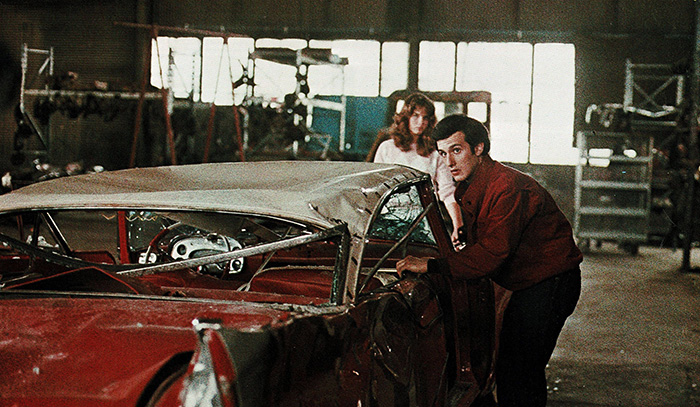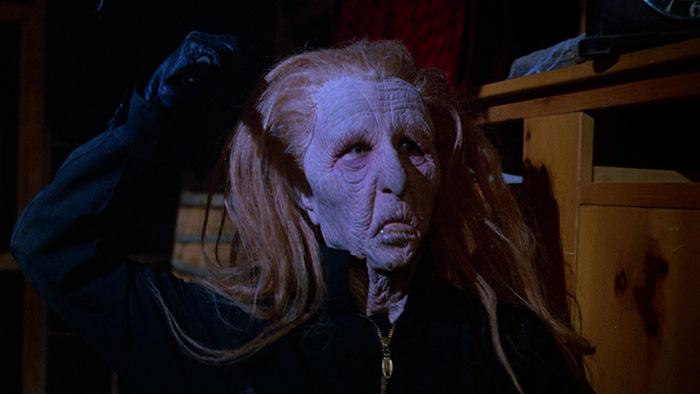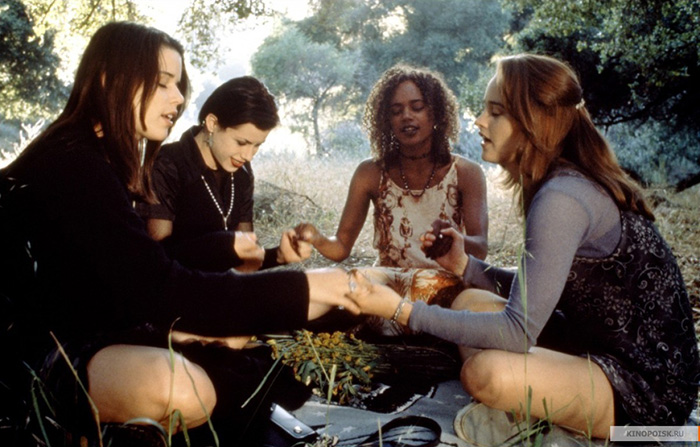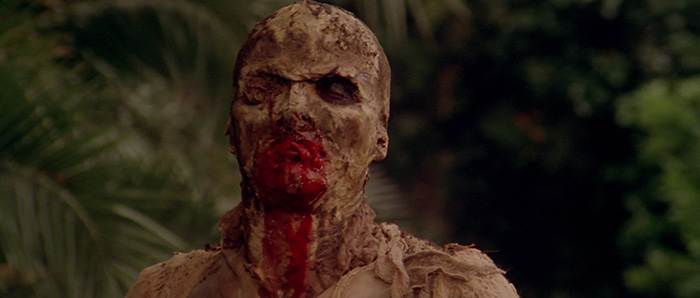Well he didn’t get up and walk out on his own. With the amount of 1980s horror films that go all-in on the blood and gore from frame one, the few that don’t can’t help but standout. What’s funny is that the latter were the types I disliked as a kid. I remember watching Joe Dante‘s The Howling decades ago on television and thinking it was too boring to ever want to watch again. We don’t even get to see a werewolf—the supernatural entity we’re promised—until two-thirds of the runtime…
Read MoreTag: Thursday Night Terrors
REVIEW: My Bloody Valentine [1981]
It can’t be happening again. Only Canada would let a holiday slasher film like My Bloody Valentine—known for having its most disturbing bits of gore chopped away for the ratings board—end with a folk ballad that gives its murderous psychopath Harry Warden an almost nostalgic lilt. With John McDermott‘s voice lending it credence, we’re pretty much given a full recap of the legend that George Mihalka reignites twenty years after those first deaths ravaged Valentine Bluffs’ sleepy little mining town. It was the community’s namesake party on February 14th, 1960…
Read MoreREVIEW: Christine [1983]
You have nothing to lose but your virginity. It shouldn’t be surprising to see parallels between John Carpenter‘s Christine and today considering we live in an era where phrases like “boys will be boys” are used to full stop sanitize the increasingly deplorable actions of young white American men. Back in the 1970s when this film (and Stephen King‘s novel on which it is adapted) is set, we would laugh at the so-called “locker room” talk of teenage boys sexualizing their female classmates and knowingly chiding the nerdy kids chiming…
Read MoreREVIEW: Carrie [1976]
Sin never dies. As a Maine resident trying his hand at literary horror, it shouldn’t be surprising that Stephen King would gravitate towards a New England topic such as witchcraft so early in his career. Carrie was his fourth novel (first to be published) and showed the potential for the skewed gaze on common tropes he possessed. The titular character isn’t a witch per se, but a young girl with newfound telekinetic powers and an abused background with which to foster a seething rage beneath her shyly sweet demeanor. Rather…
Read MoreREVIEW: Incubo sulla città contaminata [Nightmare City] [1980]
That sounds like science fiction. There’s a scene between Dean Miller (Hugo Stiglitz) and his wife Anna (Laura Trotter) about two-thirds of the way through Umberto Lenzi‘s Incubo sulla città contaminate [Nightmare City] where they speak about the perils of technology. After an hour of murder, death, and exposed breasts, suddenly the screenwriters decide to provide some semblance of meaning to the whole. Anna laments that the world would be a better place without creature comforts like instant coffee and more expansive means of infrastructure such as nuclear power. She…
Read MoreREVIEW: Curtains [1983]
Call it research. By the end of Peter R. Simpson‘s Curtains—I use the producer’s name since he ultimately finished the film two years after original director Richard Ciupka left with only forty-five minutes shot—there are just three surviving characters. One is the potential victim being chased, another the homicidal maniac under a plastic old woman mask who’s killed the rest, and the last of the trio off-screen somewhere so we’re left to question the murderer’s identity. Will it be revealed that it’s been the person we’ve thought it was since…
Read MoreREVIEW: Halloween III: Season of the Witch [1982]
They’re fun. They’re frightening. And they glow in the dark. After the insane success of John Carpenter‘s Halloween and the modest follow-through of its sequel Halloween II ($70 million on a $300,000 budget and $25.5 million on a $2.5 million budget respectively), the director readied to leave Haddonfield, Laurie Strode, and their malevolent predator behind. How many times can you bring the same supernatural monster back to life anyway? (Wink, wink.) His idea was to therefore pivot the franchise into an anthology series wherein the generic title/holiday would constitute the…
Read MoreREVIEW: Creepshow [1982]
Seven years before HBO brought EC Comics’ 1950s-era horror strips to life for their long-running anthology series “Tales from the Crypt”, Stephen King and George Romero delivered their own homage to the style with Creepshow. The former served in the role of screenwriter with two of the five chapters being adaptations of short stories he had written previously. The latter took his spot behind the camera to orchestrate King’s madness and mayhem with the help of special effects legend Tom Savini, each tale proving to be a mixture of black…
Read MoreREVIEW: The Craft [1996]
Nothing makes everything all better again. There’s a ton of untapped potential in Andrew Fleming‘s The Craft. It delivers four embattled teenage girls faced with tragic circumstances out of their control who seek to empower themselves against the internal and external struggles presented by them. This is a premise that allows for empathy and understanding because they each know what it’s like to be on the other side of nightmare. Maybe their acquisition of powers through the occult will present a period of dominance as a knee-jerk reaction to going…
Read MoreREVIEW: Videodrome [1983]
“Better on TV than on the streets” To watch David Cronenberg‘s Videodrome today is to acknowledge his clairvoyance as far as technology’s capacity to control via (mis)information. He filmed this body horror classic about subliminal messaging in mass consumption in 1983: years before the political firestorm in 1992 revolving around ubiquitous violence in videogames via Mortal Kombat, the 2007-08 television writers strike that spawned the proliferation of reality TV, the 24-hour news cycle that transformed real-life tragedies into entertainment, and social media placing false content at our fingertips with an…
Read MoreREVIEW: Zombi 2 [Zombie] [1979]
“It never pays to ignore native superstitions” While Zombie may be known as a horror classic, its origins are almost farcical. Helmed by “Godfather of Gore” Lucio Fulci, the Italian-produced project was already in development (from a script by Dardano Sacchetti before wife Elisa Briganti took over) when the European release for George Romero‘s Dawn of the Dead began its repackaging as Zombi. The latter was a re-edited cut by Dario Argento complete with new Goblin score, so its success screamed for a quick Italian follow-up. Suddenly Fulci’s film became…
Read More










